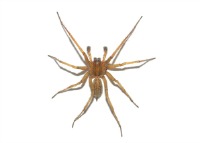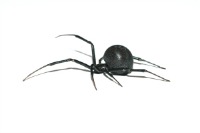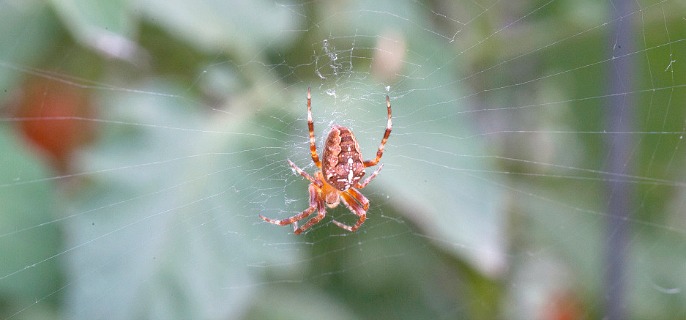[quote style=”2″]Oregon Home to Only One Species of Poisonous Spiders[/quote]
There are about 500 species of spiders residing in Oregon, about a dozen species commonly found near or inside homes, and only one that is considered poisonous– the black widow.
Even then, the chances of being bitten by a black widow spider are extremely remote. That’s the take home message from the Oregon Department of Agriculture as it addresses the fascination– and sometimes fear– that Oregonians have with spiders in general.
“Spiders are probably one of our top, if not the number one, source of inquiries we receive, particularly this time of year when people are noticing them more often,” says ODA entomologist Jim LaBonte. “Spiders that have been small and inconspicuous are getting older and adult size. For some species, the males are beginning to wander around looking for females. Until now, nobody has noticed them because they’ve been hiding in cracks, crannies, and crevices. People think suddenly there are lots of spiders around, but they’ve actually been there the whole time.”
Cooler weather can drive spiders to seek shelter inside the home. Spiders outdoors in webs will soon either freeze to death or the insects they feed on will become inactive, leading to spider starvation.
Oregonians should not be overly concerned by the spiders they may find inside the home.
“We are very lucky in Oregon to live a spider-friendly state,” says LaBonte. “We have only one poisonous spider– the black widow. None of the others you find in houses here are poisonous.”

The most common spider specimens submitted to ODA for identification are the hobo spider and the giant house spider. Neither are known to have venom poisonous to people.
LaBonte acknowledges that the black widow resides in about three-quarters of the state, primarily in Central and Eastern Oregon, but not commonly in the Willamette Valley. Still, he advises Oregonians to be cautious but not paranoid when it comes to the black widow.

For people living in areas inhabited by black widow spiders, wearing gloves when cleaning garages or handling wood from a woodpile is good common sense. Before putting on clothing, shake it out, including shoes or boots that have been kept outside or in a garage or basement. Keeping up on the indoor cleaning and vacuuming in the home is also a good preventive measure. Cluttered surroundings provide shelter for spiders.
“In reality, your chances of encountering a black widow spider are very slight and your chances of being bitten by one are almost infinitesimally small,” says LaBonte.
ODA routinely receives emails and pictures of spiders people find inside their home. Some folks are simply curious, but others are concerned about the specimen living under the same roof. Many people also submit pictures of what they think are spider bites. People report reddened areas, raised blisters, pustules, or ulcers on the skin. LaBonte says those are unlikely to be spider bites but now thought to be due to bacterial infections that can be easily treated if properly diagnosed.
“Spiders have no interest in biting anything they can’t eat, and they can’t eat people,” he says. “If they had any concept that what they were getting close to was a human being, they would run for their lives because human beings squish them.”
For the most part, spiders have bad eyesight and can basically only tell light from dark. Sensitive to vibrations, they will feel a person walking close by, get scared, and seek to find a place to hide. They may see this big, dark object nearby and run towards it thinking it is shelter when, in fact, it’s a person. More often, they will run away from the big object, correctly sensing that it is a person.
“I have been collecting insects and spiders and all manners of creepy crawlies for more than 50 years, and I’ve been bitten by a spider exactly once,” says LaBonte. “And the reaction to the bite was very mild.”
Really worried about spiders in the house? The advice is the same as it is for insects you don’t want in your home– seal up all points of entrance such as gaps under doors to the outside or installing weather stripping along window frames. Keeping spiders out makes more sense than dealing with them from the inside.
“Most people have an inherent dislike or concern about spiders, some people have a phobia,” says LaBonte. “But it boils down to the fact that Oregonians really don’t have to worry about them.”
Don’t forget, spiders are beneficial, feeding on insects that can invade homes, destroy crops, and carry diseases. Like them or not, spiders are in Oregon, nearly all are harmless, and they do good things.
This story is courtesy of the Oregon Department of Agriculture









